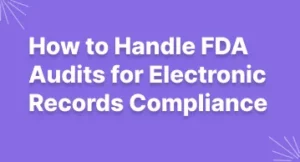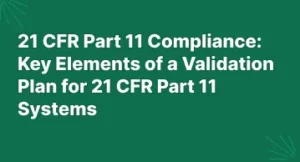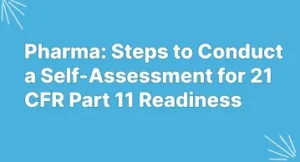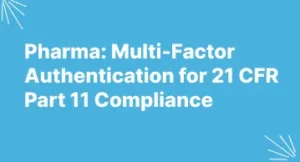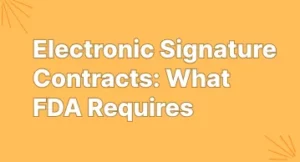Pharmaceuticals: SOPs for Digital Compliance
Introduction
In the highly regulated pharmaceuticals industry, ensuring compliance with digital processes is crucial for maintaining regulatory integrity. Pharmaceuticals companies must adhere to strict guidelines like 21 CFR Part 11 to manage electronic records and signatures securely. Standard Operating Procedures (SOPs) play a key role in ensuring that digital workflows meet compliance requirements, supporting identity verification, audit trails, and data integrity.
This guide outlines the essential steps to develop SOPs that align with digital compliance standards, helping organizations mitigate risks and streamline regulatory adherence.
Why SOPs Matter in Digital Compliance
SOPs are a critical component of digital compliance, particularly in industries that deal with sensitive information. In pharmaceuticals, life sciences, and biotechnology, compliance with 21 CFR Part 11 ensures that electronic records and signatures are legally binding and secure. Well-documented SOPs provide:
- Clear guidelines for employees
- Consistent implementation of compliance measures
- Reduced risk of data breaches and regulatory violations
- Enhanced audit readiness
Steps to Create Effective SOPs for Digital Compliance
1. Define the Purpose and Scope
Start by defining the objective of the SOP. Ask:
- What processes require digital compliance?
- What regulatory requirements, such as 21 CFR Part 11, must be followed?
- Who are the key stakeholders involved in the process?
This step ensures clarity on the SOP’s purpose and helps align it with organizational goals.
2. Identify Compliance Requirements
Each SOP should align with regulatory standards relevant to the pharmaceuticals industry. Consider:
- 21 CFR Part 11 requirements for electronic records and signatures
- Identity verification protocols to prevent unauthorized access
- Data integrity measures for secure handling of digital records
- Audit trail requirements for traceability
Include system validation requirements such as Installation Qualification (IQ), Operational Qualification (OQ), and Performance Qualification (PQ), especially for systems used to generate or manage GxP records.
3. Outline Step-by-Step Procedures
Break down the compliance process into actionable steps. For instance, if the SOP is for electronic signatures:
- User authentication via identity verification
- Secure access control mechanisms
- Step-by-step signing and approval process
- Documentation of approvals for compliance audits
Be sure to reference how procedures map to predicate rule requirements and 21 CFR Part 11 elements such as signer attribution, record protection, and audit trails.
4. Implement Role-Based Access Controls
Define access levels based on user roles to ensure data security. For example:
- Administrators: Full control over digital workflows
- Managers: Approve and review compliance documents
- Employees: Limited access for document handling
Access control SOPs should also include procedures for revoking credentials and periodic user access reviews.
5. Ensure Document Control and Versioning
To maintain compliance, SOPs must be regularly updated and version-controlled. Best practices include:
- Assigning a unique identifier to each SOP
- Keeping a record of revisions and updates
- Implementing electronic document control systems
Ensure that only the most current, approved version of each SOP is accessible for use, and that older versions are archived securely with access restrictions.
6. Train Employees on SOP Implementation
No SOP is effective unless employees are trained to follow it correctly. Organizations should:
- Conduct regular training sessions
- Provide hands-on demonstrations
- Offer refresher courses to ensure ongoing compliance
Training records should be maintained and linked to individual employees to demonstrate competency during FDA inspections.
7. Monitor and Audit SOP Effectiveness
Continuous monitoring is essential to ensure SOPs remain effective. This includes:
- Conducting internal audits to verify adherence
- Collecting employee feedback for improvements
- Updating SOPs as regulations evolve
Best Practices for Digital SOPs in Pharmaceuticals
- Utilize identity verification tools to ensure secure access
- Automate compliance tracking with digital workflow solutions
- Maintain an audit trail for regulatory inspections
- Ensure easy retrieval and storage of SOPs for reference
- Define SOP ownership and review schedules to ensure timely updates and accountability
- Integrate SOP compliance into quality management systems (QMS) for centralized oversight
Conclusion
Creating effective SOPs for digital compliance is a crucial step in ensuring regulatory adherence in the pharmaceuticals industry. By integrating 21 CFR Part 11 requirements and identity verification measures, organizations can enhance security, maintain data integrity, and streamline compliance processes. Well-documented SOPs not only help in regulatory audits but also contribute to a culture of operational excellence and risk mitigation.
For a detailed checklist, refer to our guide on 21 CFR Part 11 Compliance Checklist to Follow to ensure your SOPs align with regulatory expectations.


